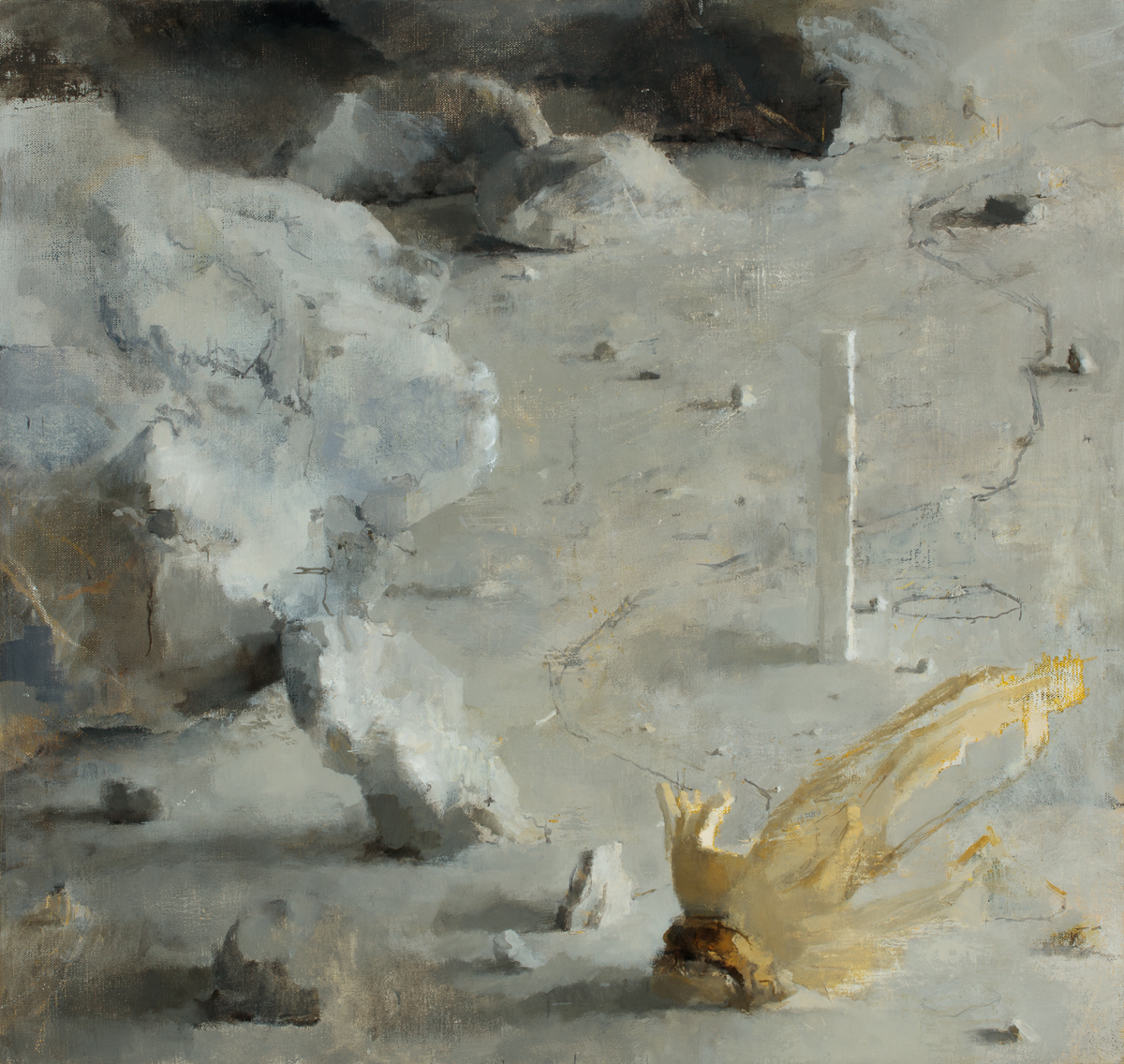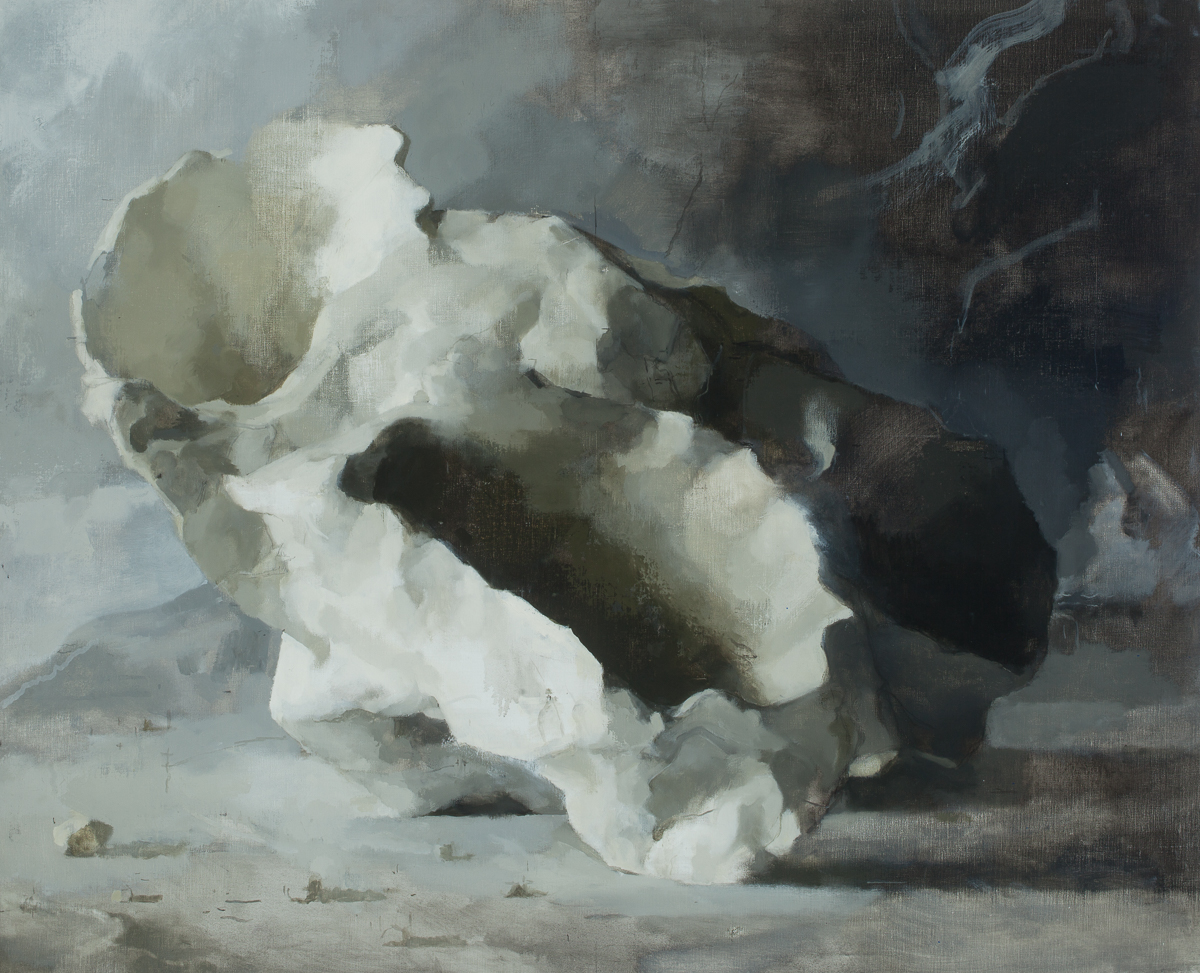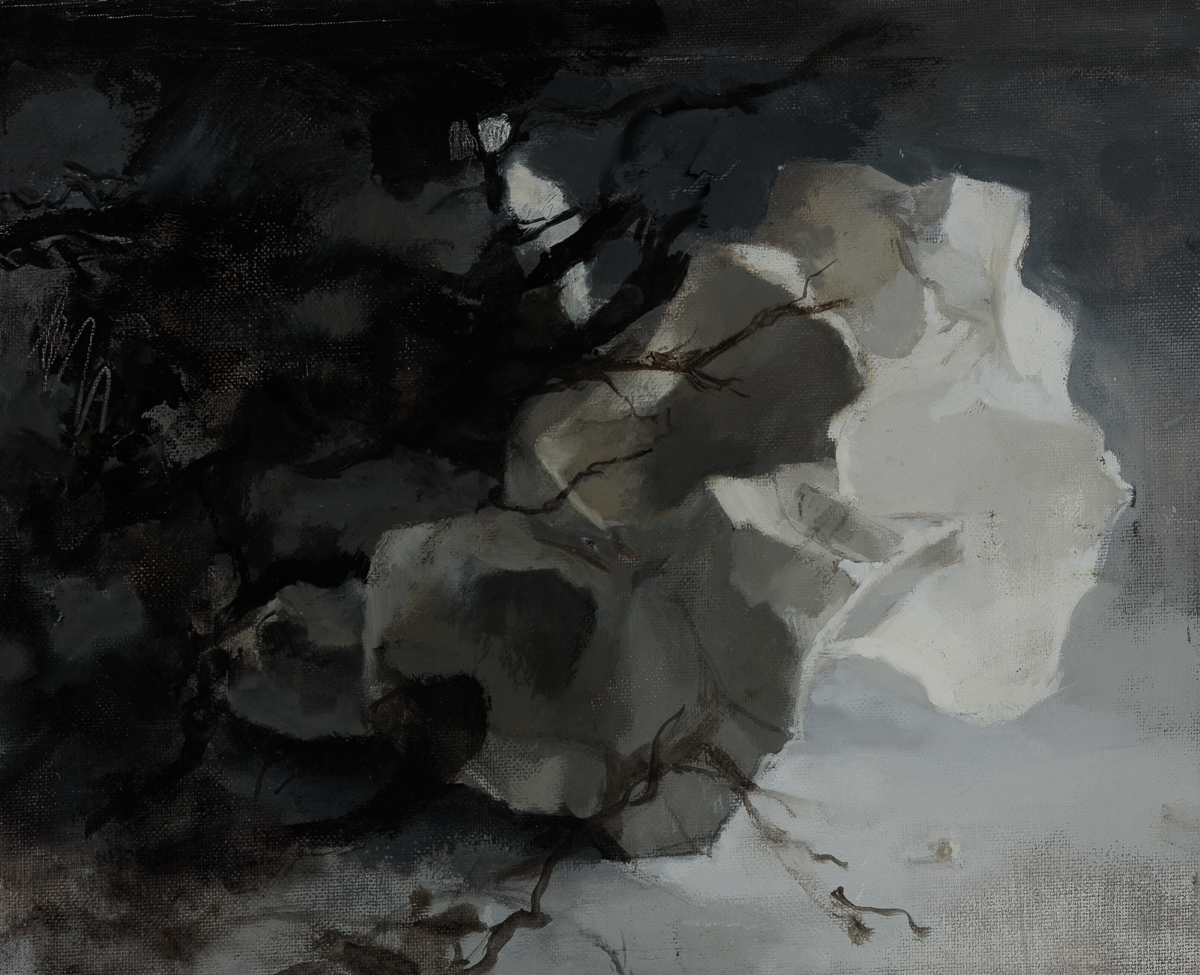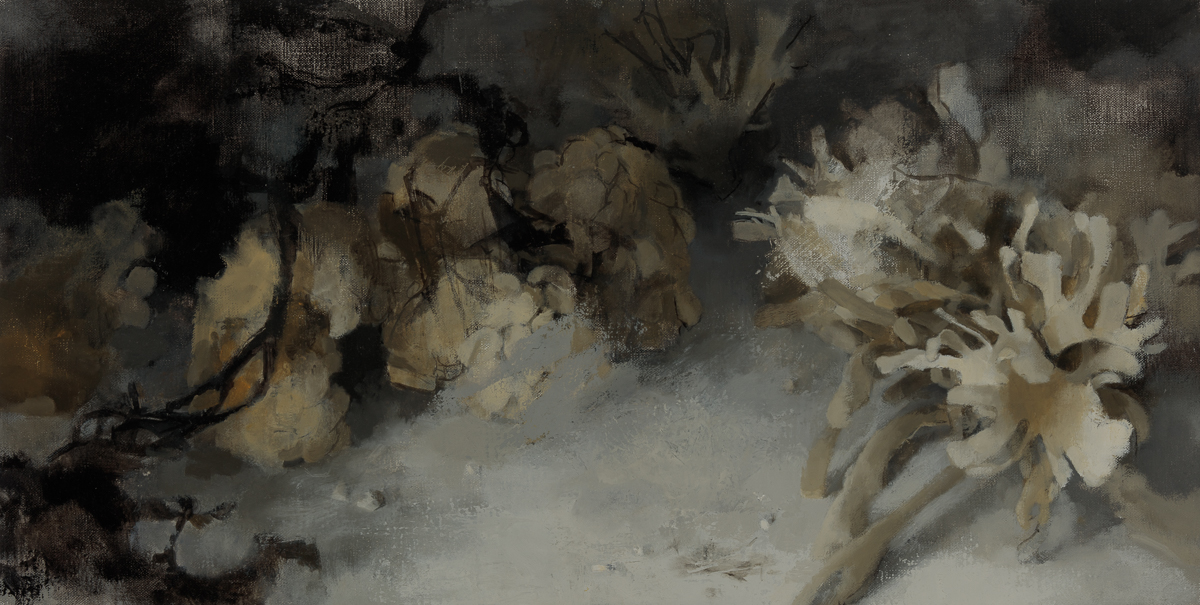
Can you tell me a bit about Opened Ground?
Opened Ground is a solo exhibition of paintings that have been evolving over the last few years. Usually, my work is about the spaces between objects; about carving out landscapes from the bits and bobs that accumulate in my studio. But most of the paintings in this show started out from a desire to simplify, to paint a single object in the middle of a rectangle. I still wanted the feeling of ‘landscape’ to be there, but this time for it to be evoked in the hollows and ridges of the object itself, as it does when I’m staring at it for hours on end in the studio. Something very small can appear very big when you look at it for a long time. Each painting has taken me in a different direction but a common theme that emerged is the reluctance of the object to remain alone in the middle of the rectangular painting. Most of the work has been about exploring this tussle between the object depicted and object of the canvas itself and testing the boundaries of the container.

You work from life but your paintings have an abstract nature to them also. Can you tell me a little about your process? Do you begin from life and then step away as you work through a piece, or are you intently engaged with the items in front of you throughout?
If they have an abstract nature it’s because I’m more concerned with the formal aspects of painting than the narrative ones. It also seems that the more intensely you observe ‘reality’ the more ‘abstract’ it appears. I keep coming back to working from life because I love the intimacy of staying patiently in the presence of one particular object (or group of objects) day after day. The relationship feels more two-way than just me observing. Objects come charged with psyche; they have got qualities that aren’t just on the surface, qualities that aren’t immediately apparent. If you spend time with an object it starts to reveal its interiority to you. I’m also very interested in the vagaries of perception, and the challenges thrown up when you’re working from observation. There’s a huge slippage between what you see and what is actually out there.

You’ve worked exclusively with black, white and yellow ochre for this body of work. Has the process changed your way of working in any way or your approach to wider use of colour?
I’ve used this restricted palate on and off for years but never as exclusively as I have for the work in this show. There are various reasons for doing so. Firstly, I enjoy the challenge of trying to eek out as much chromatic activity as possible from a limited range; stretching the parameters of the range and exploring the tensions within it. It’s more about the interaction of colours (especially between “warm” and “cool”) than colour itself. A beautiful example for me of this kind of tension between warm and cool is something we’ve probably all experienced, that Bridget Riley mentions in her essay, Pleasures of Sight. Remembering her childhood in Cornwall she talks of “taking dawn-walks over the cliffs when one’s footsteps left a curiously flat heavy green mark in the pearly turquoise of the dew” (i.e. the warm heavy green mark and the cool turquoise dew). Secondly, I find that getting rid of an object’s ‘local’ (natural) colour helps to dampen down its identity. Stripping it back to its raw form like this also makes it more receptive to the nuances of light-fall. Once something is named its imaginative potential immediately shrinks and it becomes stuck, fixed in a single given identity. Thirdly, it allows me to explore space and light in a more focused way without the responsibility of colour.
Using the restricted palate hasn’t changed my way of working but it has helped to clarify what I do and don’t want from colour. As a child, I played every day in the woods so I know what it feels like to be literally saturated in green, for the thick green light that you move around through to feel like liquid, or like a physical substance. It left a stain on my psyche that’s always quietly nagging me, urging me to find a way to return to the sensuality of those experiences and to find a language that doesn’t suppress or stifle colour’s real energy.
So over the last few years, alongside these black, white and yellow ochre paintings, there has been another seam to my practice where I’ve been playing with colour in a fuller way, exploring ways for it to communicate more sensually, and ways which allow it to be more optically active. Bridget Riley talks about colour only being “free to express its innate character once it is free from any sort of task of describing or depicting things.” On one level she is right, but stubbornly I feel there is a way for the colour and the space in a painting to be fully alive, without negating each other. I’ve been looking for that tipping point where colour can maintain its autonomy and be optically active, whilst the image itself remains spatially and atmospherically sturdy. It’s a precarious place; either the colour slips off into a purely subservient, descriptive role or the drawing collapses, taking the forms and the space down with it. It’s an ongoing project and involves a lot of experimentation on either side of that point.

How has this work been inspired by Seamus Heaney’s poetry?
I discovered Heaney’s work quite recently so it didn’t so much inspire these paintings as make sense of them for me, in retrospect. The imagery and soul of the work of Heaney, Alice Oswald and Ted Hughes resonates powerfully for me. Most of the painting titles in this show are drawn from their poems. The estuaries, bogs, moorland, rivers and other damp places that recur in these poets’ work are also environments that have always nourished and inspired me. The feelings that my paintings grow out of seem to be spawned in these kinds of spaces. I am particularly drawn to the emerging and retreating landscapes of estuary and creek spaces; a new landscape appearing every six hours, at the whim of the tides. One minute it’s land and the next it’s water; solid, liquid, solid, liquid: a magical, nonsensical, otherworldly place.
When I’m out in the woods or staring down at water sliding over the tops of my feet in a shallow stream, I have such a strong sense of melting in to it, of us all being made of the same stuff; flesh, weed, bone, rock, skin, mud, mucus.

You collect many of the items you work from while out walking. Are you looking for anything in particular or are you quite instinctive with your collecting? And do they come from a similar area (if so, where)?
No, I’m not looking for anything in particular. It’s very instinctive. I’m not actively collecting. I just pick things up as and when they take my eye, whether I’m crossing the Harrow Road, or rambling over Dartmoor. The experiences I have when I’m out in the landscape are probably a more vital component in the paintings than the actual objects I pick up. The stuff that seeps in imperceptibly, through the senses, seems to leak out in a more concrete form, often years later, in the paintings. It might manifest as the atmosphere in a painting or in a more physical way, like how I make a mark or react to the surface of the canvas. Mostly the sticks and rocks and bits of twisted metal that make their way into the studio have to sit around for several years before they become ripe for painting. Sometimes I catch something in the corner of my eye that suddenly resonates for me on an emotional level, but usually, the choice of objects is dependent on the formal requirements of each painting. I might need something long to activate a diagonal, or spiky to generate rhythmic activity, or fuzzy to play off of some sharpness.
‘Opened Ground’ is showing at Jessica Carlisle until 3 December.





